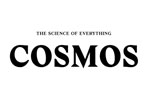To read more and to listen to Associate Professor Katz's podcast about these new guidelines Click here
Blue light to replace a little blue pill?
A new blue light therapy for erectile dysfunction works in rats, but not all researchers are convinced humans will respond in the same way. – istockphoto
Is it time to put Viagra to bed? Instead of a blue pill, erectile dysfunction could one day be treated with blue light. Scientists from the Swiss Federal Institute of Technology injected rats with DNA which caused erections when the rats were exposed to blue light. Lead researcher Martin Fussenegger says the treatment could be tested in humans within five to 10 years.
The findings were reported in the journal Angewandte Chemie in March. “It's really good that people are doing this research,” urologist and medical director at the Men’s Health Melbourne clinic Darren Katz says. He said the penis was a good target for gene therapy.
Achieving an erection can be compared to starting a car – a host of steps separate turning the ignition key (arousal) and getting the motor running (an erect penis). If any components are damaged or missing, the car won’t start (or it sputters and stalls). Erectile dysfunction – the inability to gain or sustain an erection – affects more than 150 million men globally and more than one million men in Australia. And unfortunately Viagra, the most popular treatment to date, can’t do it all. The drug can bolster an existing erection but can’t initiate one, which means it can’t help men who suffer damage during prostate surgery to the nerve that controls erections, for example. Researchers are looking for new approaches, and an answer might be genes rather than drugs.
Gene therapy treats or prevents diseases by either introducing a useful gene to cells or removing a defective one. This happens in nature all the time – swapping bits of DNA allows bacteria to share antibiotic resistance genes swiftly.
After a mere 37 seconds, the rat’s penis was standing at attention.
If getting an erection is like starting a car, Fussenegger’s technique is a jump-starter. His approach used the simplest form of gene therapy, “transformation”, in which naked DNA strands are injected into target tissue. The researchers injected a light-sensitive synthetic gene – an erectile optogenetic stimulator, or EROS – into the two columns of spongy erectile smooth muscle of the penis called the corpus cavernosa, which was engulfed into the smooth muscle cells.
Once absorbed, EROS instructs the cell to produce a blue-light responsive version of the enzyme guanylate cyclase. When the researchers bathed the rats in bright blue light, it kickstarted guanylate cyclase to produce a surge of a molecular messenger called cyclic guanosine monophosphate (cGMP). As cGMP relaxed the smooth muscle cells in the corpus cavernosa, blood rushed in to the spongy spaces from surrounding arteries. After a mere 37 seconds, the rat’s penis was standing at attention.
And while the blue light could trigger an erection, it could also keep it up – sometimes all the way to ejaculation.
“Injecting DNA does sound kind of strange,” Fussenegger admits, but he says using naked DNA is safer than other ways of introducing it. Katz adds that the penis is an attractive candidate for gene therapy – as an external organ, it’s easy to inject into and easily penetrated by the blue light, and its cells don’t turn over as fast as other bodily organs.
Fussenegger is optimistic about the prospect of human clinical trials. Men may cringe at the idea of a couple of penis injections every week, but Fussenegger says “it wouldn’t be as painful as people might think”. Using extremely thin needles such as those used for insulin injections in diabetic patients would make the process less painful. And DIY gene activation is simple – the bright blue light was an off-the-shelf lamp used to treat seasonal affective disorder. “It's not a fancy LED,” Fussenegger says. “Anyone can buy one.”
But Katz is less confident: “Getting ethics approval for human gene therapy trials is very difficult – even for life-threatening conditions. Given that erectile dysfunction isn't life-threatening, we'd be years away from seeing this anywhere near a clinical trial.” He also points to a 2007 study of a drug called FK506 that was shown to decrease tissue damage in rat penises and protect erectile function, but in humans it didn't work. “What happens in a rat is not necessarily what will happen in a human,” he says.
And while Fussenegger also found that pairing his blue light therapy with Viagra kept the rat penises harder for longer than blue light alone, erections on demand for humans are still at least a few years away.
 Minimally Invasive Prostate Surgery
Minimally Invasive Prostate Surgery Penile Implant Surgery
Penile Implant Surgery Kidney Stones
Kidney Stones Male Fertility Check-Up
Male Fertility Check-Up Microsurgery for Male infertility and Vasectomy Reversal
Microsurgery for Male infertility and Vasectomy Reversal Incontinence
Incontinence Erectile Dysfunction
Erectile Dysfunction General Urological Conditions
General Urological Conditions Peyronie’s Disease
Peyronie’s Disease Penile Duplex Doppler Ultrasound
Penile Duplex Doppler Ultrasound Penile Rehabilitation
Penile Rehabilitation Testosterone Therapies
Testosterone Therapies Premature Ejaculation
Premature Ejaculation










 A/Prof Darren Katz
A/Prof Darren Katz Dr. Deanne Soares
Dr. Deanne Soares Dr. Vincent Chan
Dr. Vincent Chan Dr. Glenn Duns
Dr. Glenn Duns Luke Mitchell
Luke Mitchell






